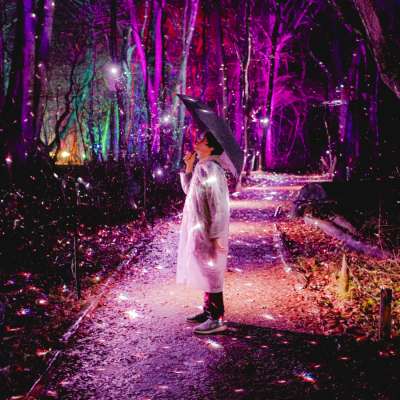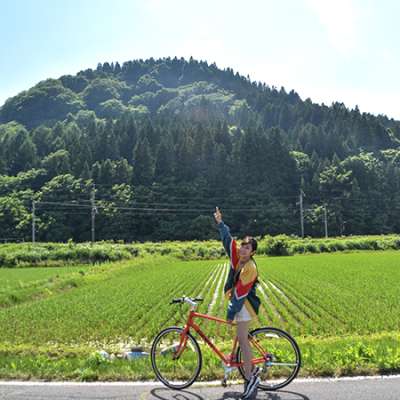Use the
Planning a Trip to Japan?
Share your travel photos with us by hashtagging your images with #visitjapanjp
HOME > Tohoku Colors > Samurai Encounters
About this Tohoku travel
The Tohoku region, consisting of six prefectures in Japan’s northeast, is lushly covered in forested hills and vast fields.
Some of the country’s premier rice is grown here, and the region’s grapes, cherries and other orchard fruit are famous throughout Japan.
Zipping through by Shinkansen (bullet train), it is easy to think that this area is simply a pastoral paradise.
But step off the train and walk Tohoku’s roads—as John,
the YouTuber behind the popular ONLY in JAPAN * John Daub channel,
did—and you will discover a land and people fiercely proud of their samurai heritage,
who have preserved their history so well that visitors feel like they have travelled back in time.
Join John on this journey through Tohoku, once the last bastion of samurai,
and discover the resilience, moral code and unbreakable spirit of northeastern Japan’s samurai warriors.
Written by Helen A. Langford-Matsui
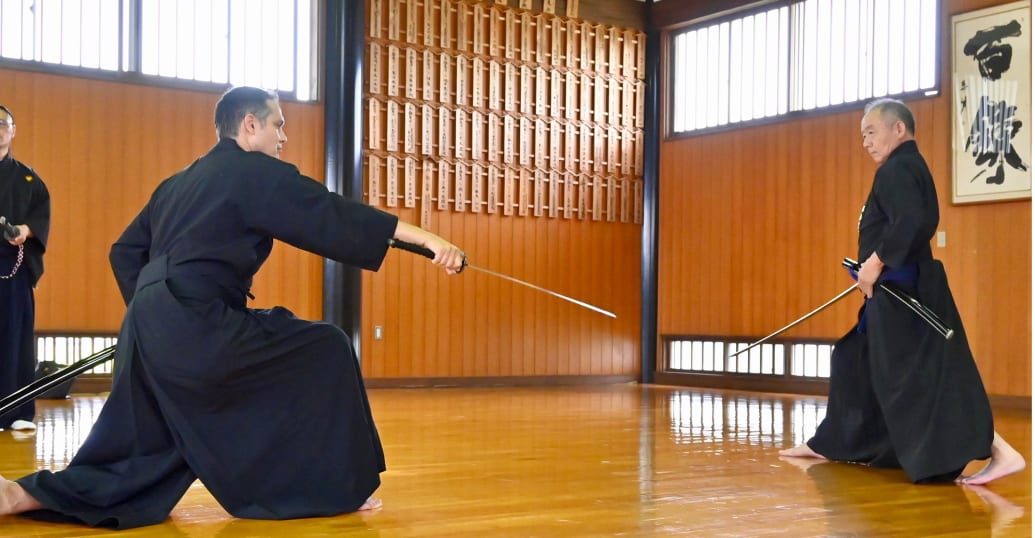
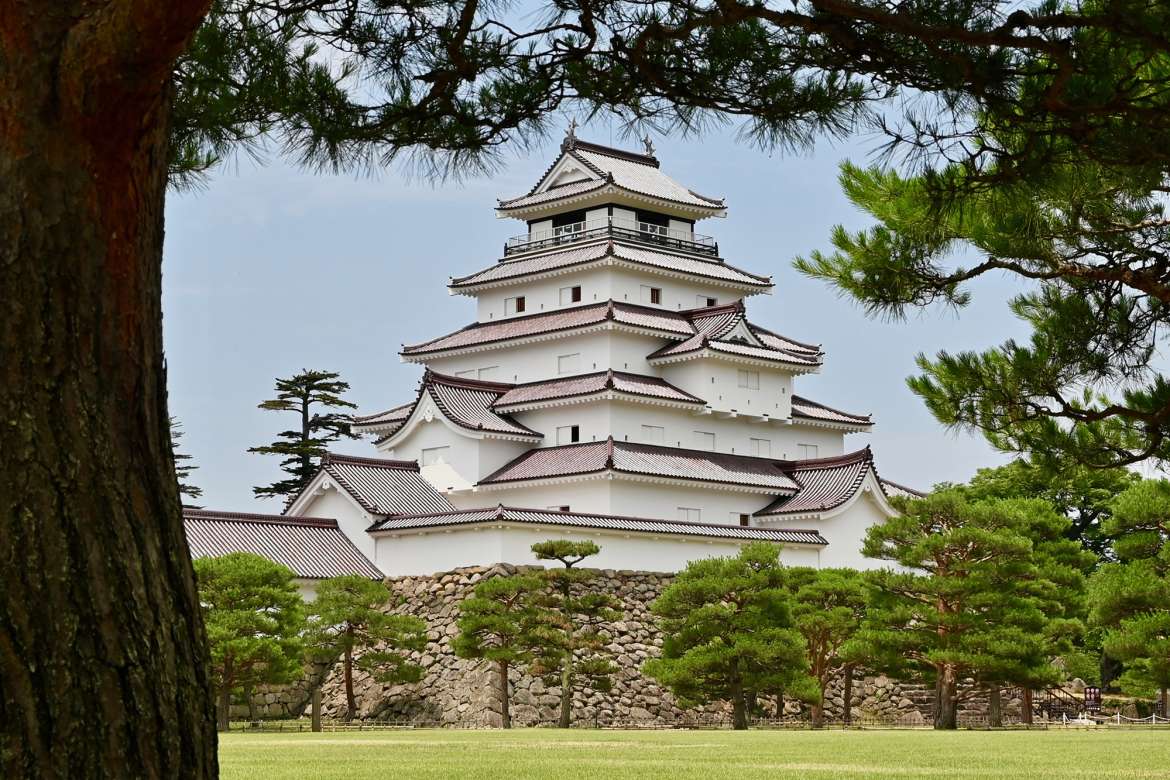
Aizu-Wakamatsu: Final Stronghold of the Samurai
“If you come to Tohoku, definitely put Aizu-Wakamatsu on your list of places to visit,” says John. “They call this “samurai city”; there’s a lot of history in this town.” Aizu-Wakamatsu, in Tohoku’s southernmost prefecture of Fukushima, is just 2.5-hours by Shinkansen and local train from Tokyo. A white castle with red roof tiles—the only one of its kind in Japan—rises above the city.
This is Tsuruga Castle, fortress of the powerful lords of the Aizu Domain, loyal to the shogun, the leader of Japan’s bakufu (military government). Once considered impregnable, the castle fell in 1868 during the Boshin War, a civil war between supporters of the shogun and the forces of the new Meiji government. The defeat of the Aizu domain and its supporters marked the end of the age of samurai.
Though the story of Aizu is tinged with tragedy, the domain also experienced long periods of peace when it prospered. Discover the daily lives of people in the Aizu domain and the major events that shaped their world at the museum inside the reconstructed castle. From the top floor, visitors can look out over the countryside and castle town where Aizu’s samurai once flourished.
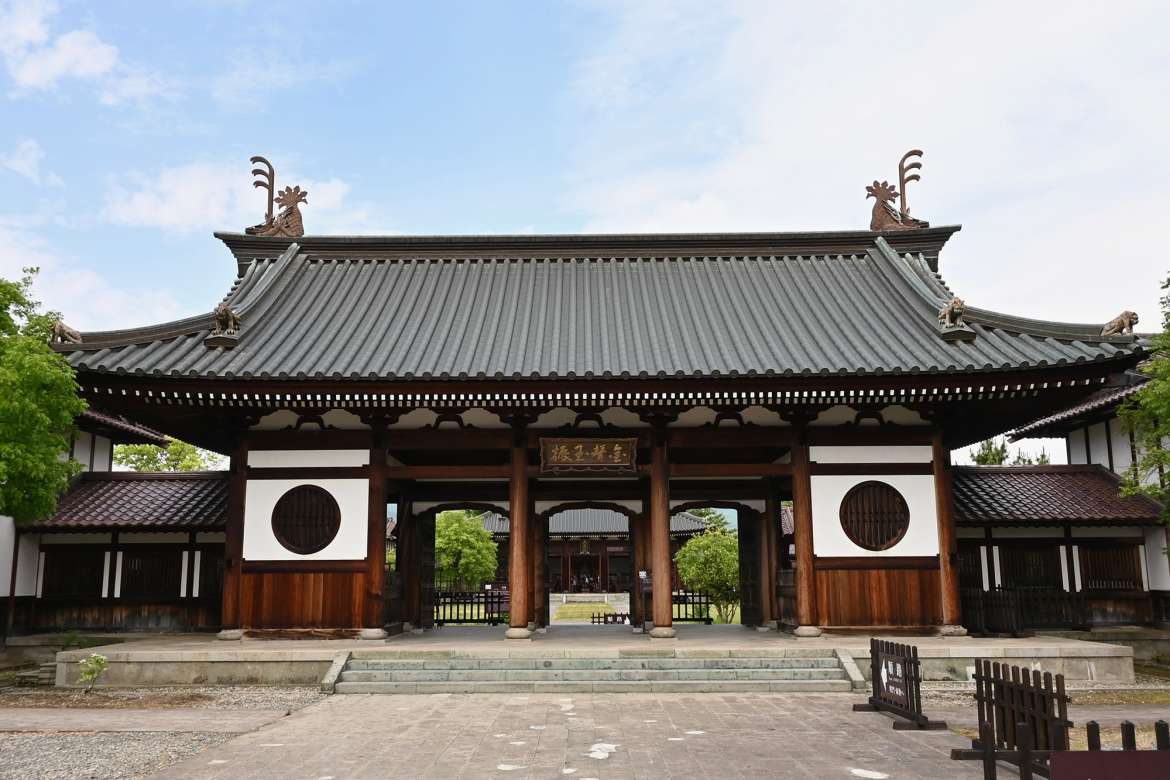
Samurai—commonly called bushi in Japanese—were not born with their legendary skills: they were educated and molded to fit their role. In Aizu, male children of the samurai class were sent, at the age of 10, to Nisshinkan, the Aizu domain school, to begin their formal training.
Nisshinkan was one of Japan’s top samurai schools teaching reading, calligraphy, and etiquette, as well as martial arts training. The school even offered an optional astronomy class and was one of only two schools in Japan with an astronomical observatory. A visit will leave you with a better understanding of what informed samurai behavior in times of both war and peace.
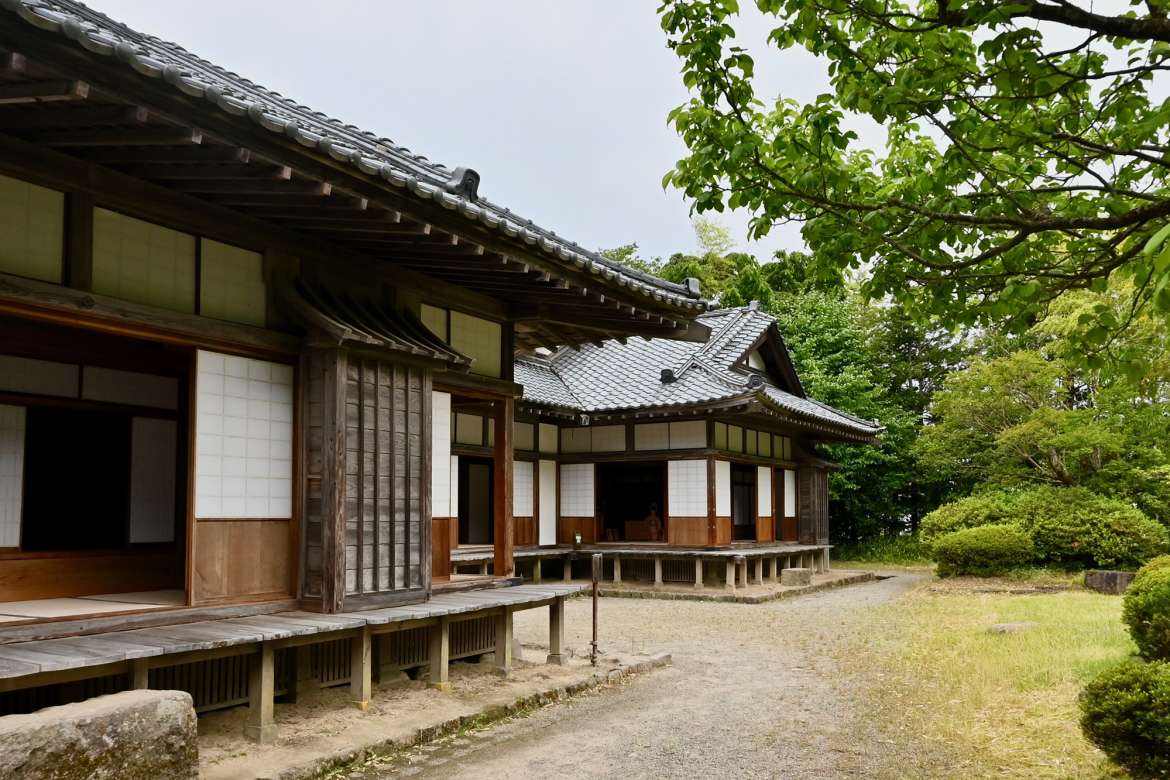
Another important domain building you can visit is Aizu Bukeyashiki. Now a museum, Aizu Bukeyashiki was once the residence of the Aizu domain’s chief retainer.
The chief retainer’s abode was not merely a residence. This 38-room compound included administrative offices, servants’ quarters, and a rice-polishing mill. Lifelike mannequins provide a more intimate look into life in a samurai household.
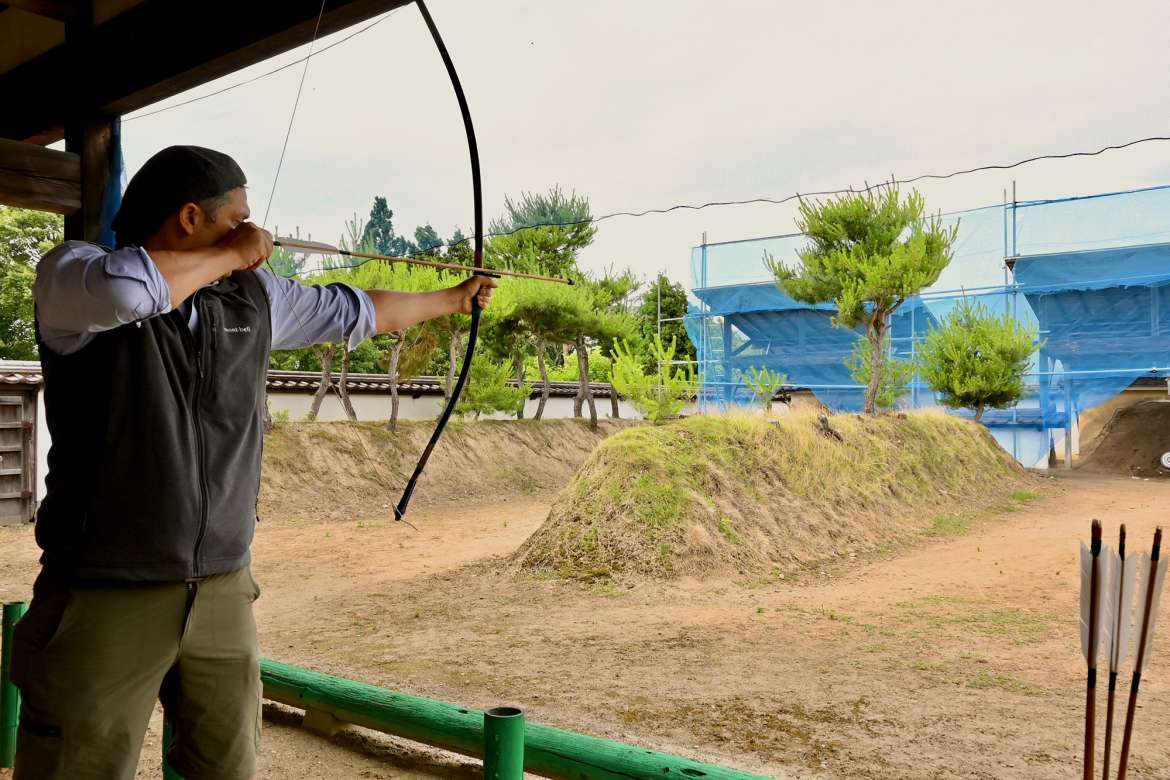
All three museums offer hands-on experiences. From enjoying matcha tea to painting an akabeko toy cow or other folk craft, and trying your hand at kyudo (Japanese archery), there are plenty of activities to give you a taste of Aizu’s culture.
While drinks and snacks are available at all the museums, for a true regional feast of wappa-meshi be sure to stop by Takino, a restaurant housed in a handsome 250-year-old building. Wappa-meshi, which has been served for over 600 years, consists of rice and toppings—such as mushrooms or salmon—steamed and served in a rounded Japanese cedar or cypress box that adds a delightful hint of fragrance to the meal.
After a full day immersed in the regimented, strict, and sometimes brutal side of samurai culture, it’s time to relax with a hot spring bath at the Kutsurogijuku Shintaki Inn in Higashiyama Onsen. During the Edo period (1603–1867), the area was a retreat of the feudal lords of Aizu, and Kutsurogijuku Shintaki Inn, established in 1889, boasts a hot spring once frequented by rulers of the Aizu Domain. Incredibly, you can soak in springs that once refreshed—and by some accounts, healed—Aizu’s samurai. After your bath, tuck into a dinner of kaiseki-ryori (a traditional multi-course meal) prepared with local ingredients.
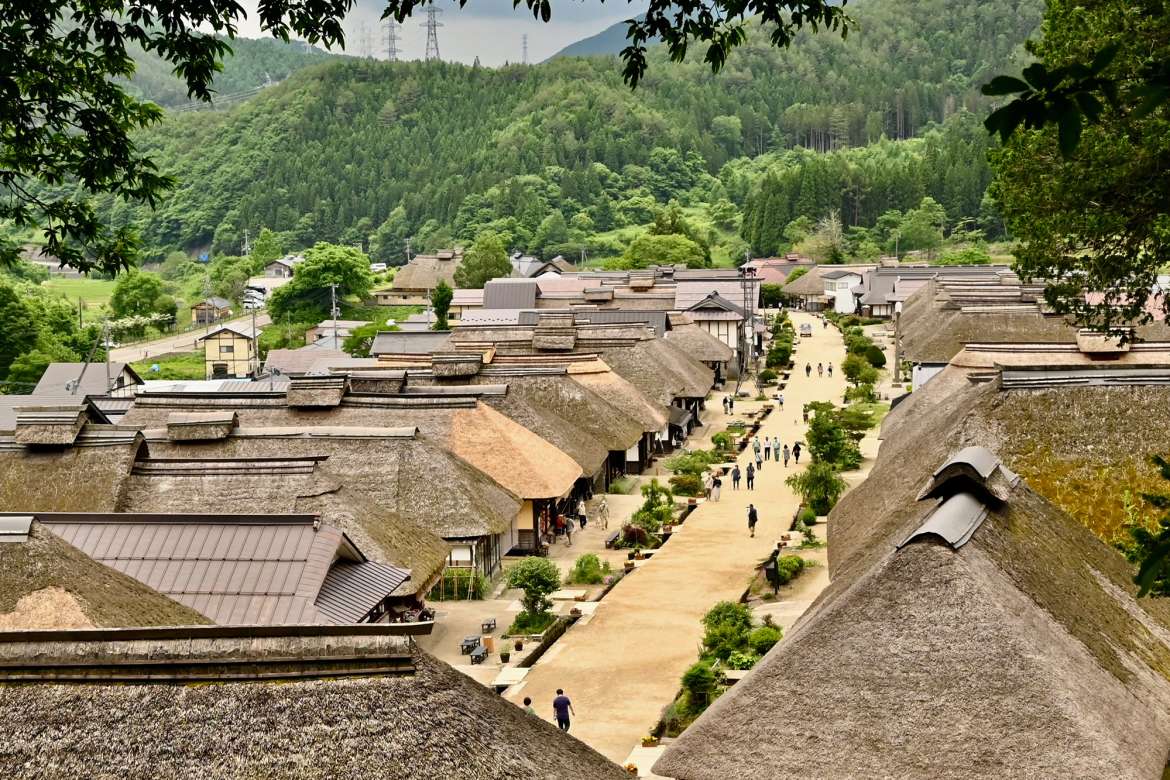
Ancient Roadways and Sake Fit for Feudal Lords
Edo period Japan was crisscrossed by roads that connected various areas of the country to Edo (modern-day Tokyo), where the bakufu was based. Feudal lords were required to live part-time in the military capital, and they used this system of roadways to travel with their entourages—samurai included—between their home domains and Edo.
Ouchi-juku was once a stopping point along the regional Shimotsuke Kaido road. This former post town retains its Edo-period appearance and thatched-roof buildings, largely thanks to townsfolk who abide by three rules: do not sell, do not rent, do not destroy. Their dedication has paid off. For John, Ouchi-juku is “one of the gems of Fukushima.”
The thatched buildings of Ouchi-juku, a designated Important Preservation District for Groups of Traditional Buildings, are now filled with restaurants serving regional specialties such as negi-soba (buckwheat noodles served with a single bunching onion used in place of chopsticks), little stores and workshops offering the opportunity to try local folk crafts, like painting an akabeko toy cow.
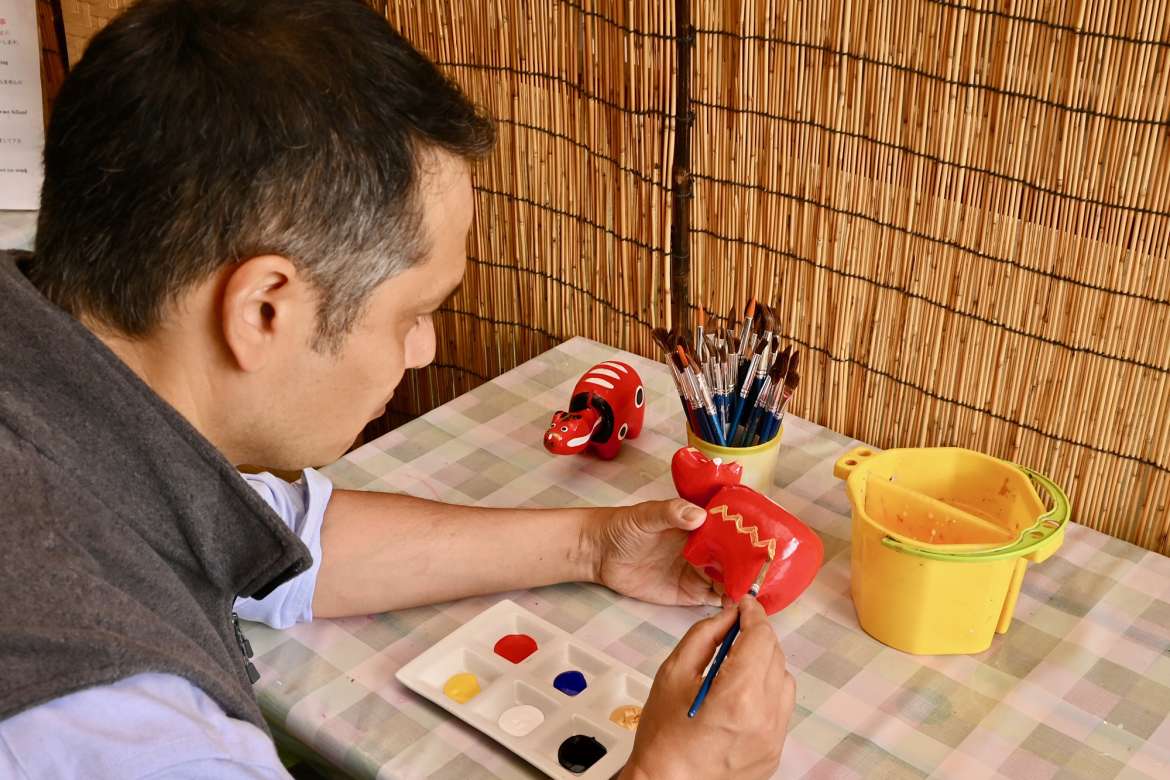
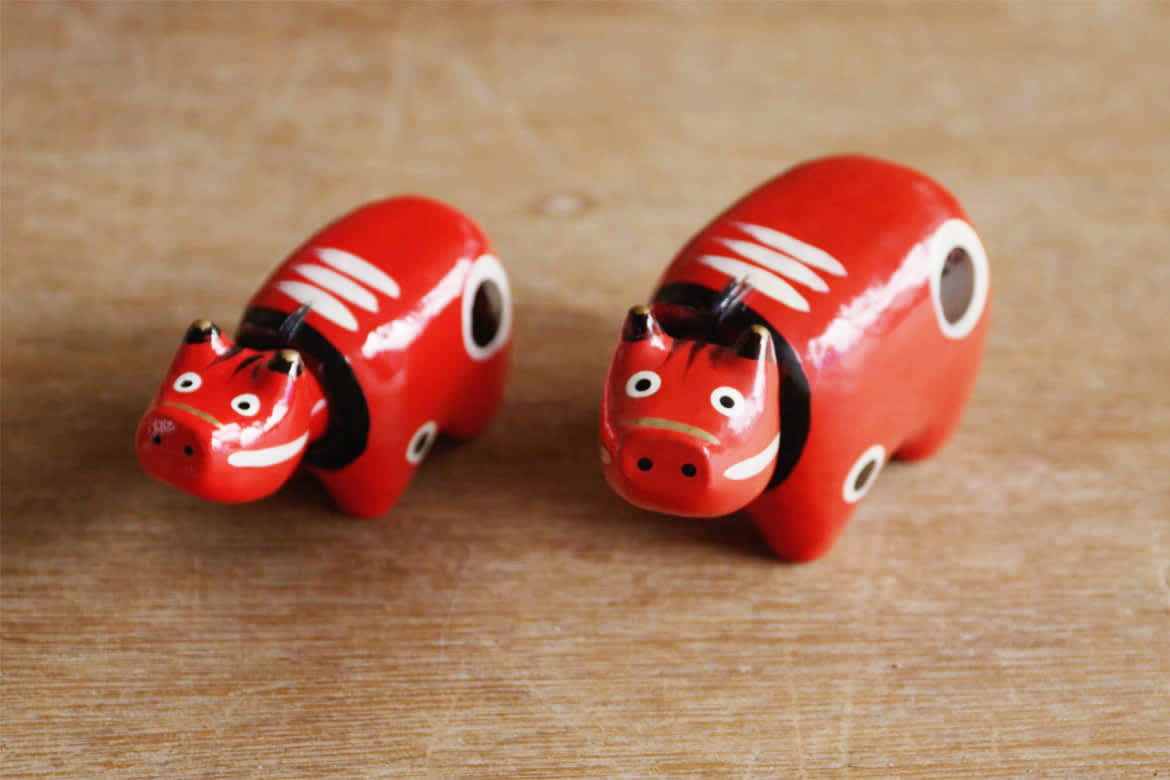
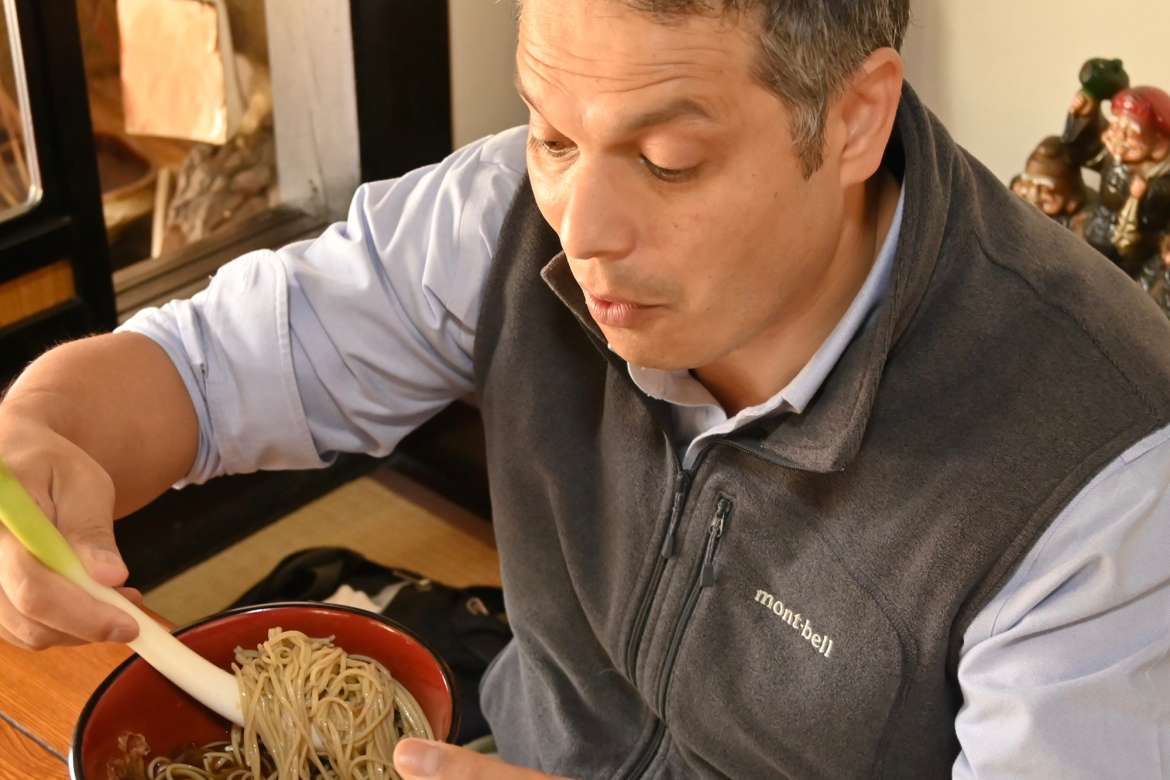
While strolling the main road through town, stop by Ouchi-juku Pavilion. Formerly an inn frequented by feudal lords and other members of the upper class, the building now houses a museum that provides a look at life before modernization.
From Ouchi-juku, head north to the former castle town of Yonezawa in Yamagata Prefecture.
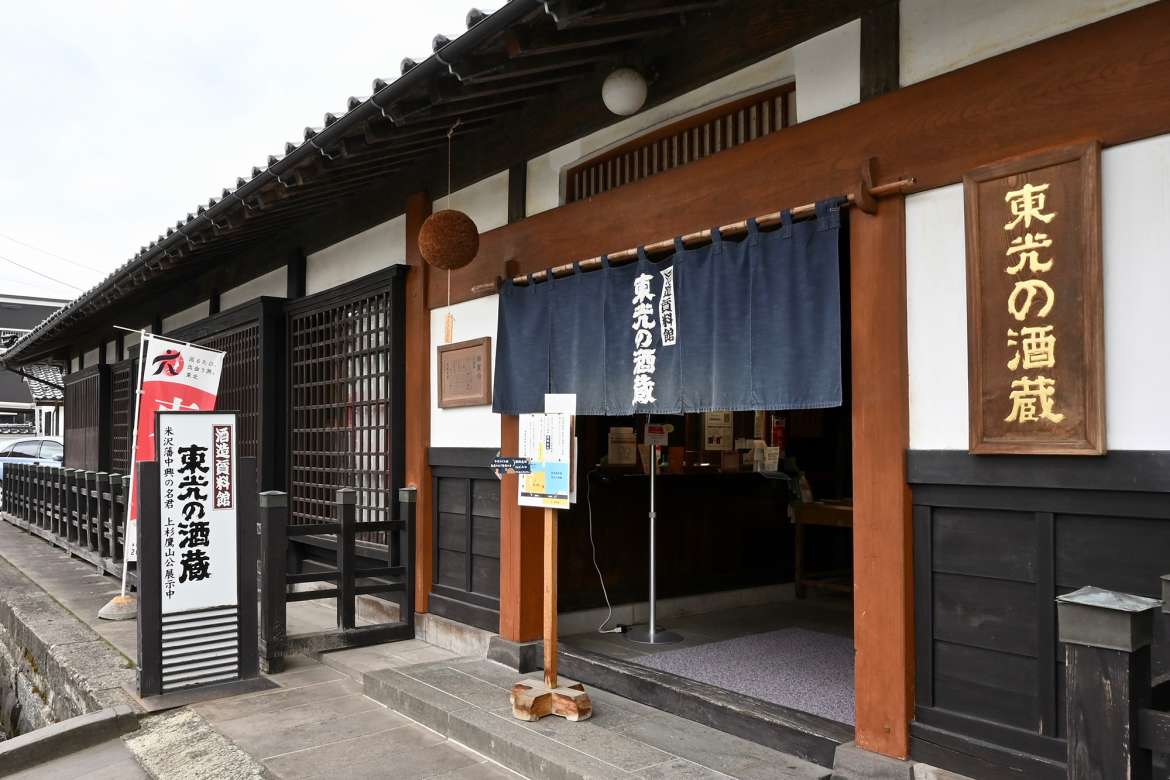
Yamagata Prefecture is rice country, and sake producers abound. Kojima Sohonten in Yonezawa was established in 1597, making it one of the oldest breweries in both Yamagata and Japan. The Uesugi family arrived to rule the Yonezawa Domain shortly after the company’s founding, and they quickly became a sake purveyor to the new lords.
In addition to brewing sake, the Kojima family—owners of Kojima Sohonten—also operate the Sake Brewery Museum Toko-no-Sakagura. The museum is housed in a 150-year-old former brewery, built entirely without nails using a traditional form of carpentry.
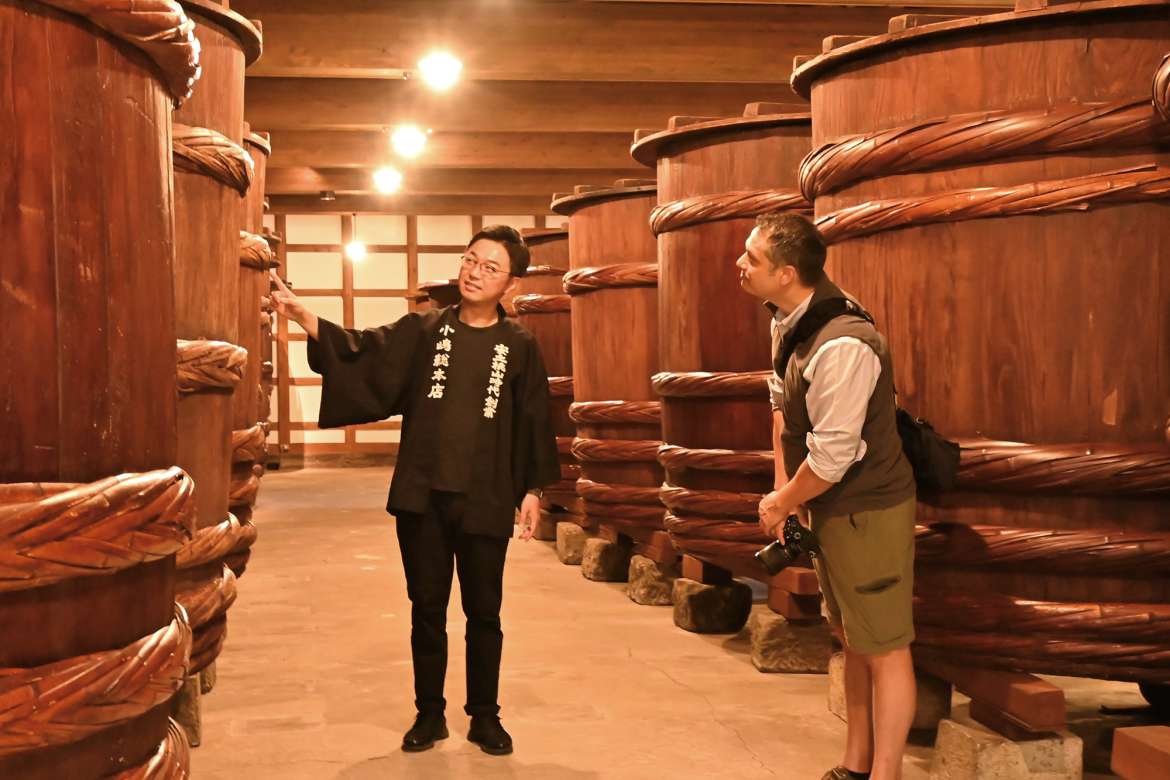
Inside you will find antique sake-making equipment, enormous wooden tanks, recreated Meiji period (1868–1912) living spaces, a souvenir shop, and more. Don’t miss the tasting counter where you can sample some of the Kojima family’s finest creations, including their award-winning Toko sake that John describes as having a “clean, clear taste that cuts straight through to your happy place.”
When suppertime rolls around, make your way downtown and find a restaurant specializing in Yonezawa beef, like Yonezawa-gyu Yakiniku Sakano. Considered one of the country’s top three wagyu brands, Yonezawa beef is melt-in-your-mouth tender, ever-so-slightly sweet, and a must-try for meat-lovers.
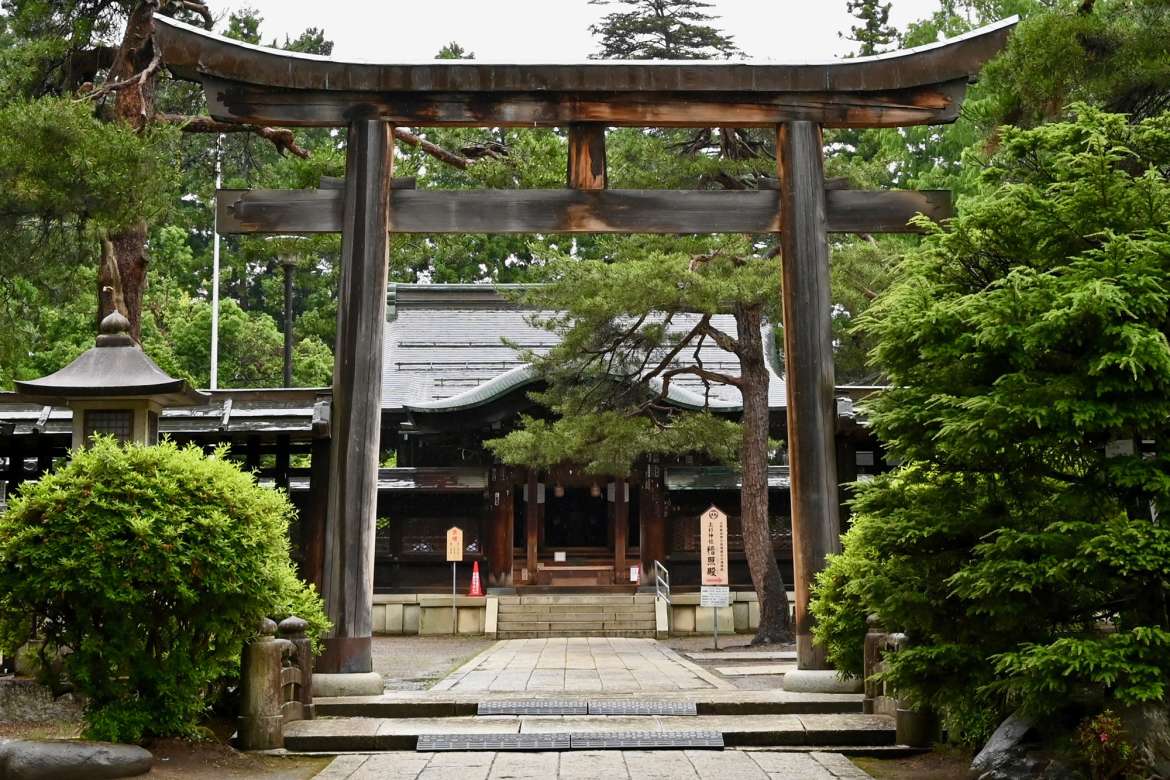
The Uesugi Family of the Yonezawa Domain
Like many other castle towns in the area, Yonezawa Castle was destroyed after the domain’s defeat in the Boshin War. Now, Matsugasaki Park sits on the castle site.
Within the park you will find two shrines dedicated to members of the Uesugi family: Uesugi Jinja Shrine, dedicated to Uesugi Kenshin (1530–1578), one of the most renowned leaders of the Warring States period (1467–1568) and Matsugasaki Jinja Shrine, dedicated to, among others, Uesugi Yozan (1751–1822), who guided the domain through a period of extreme hardship by instituting broad reforms and encouraging new industries.
The sando pathway leading to the larger of the two shrines, Uesugi Jinja, crosses the still-extant castle moat where koi carp expectantly wait to be fed by visitors. The seasons put on a show here: in springtime, cherry trees along the moat sit heavy with blossoms, while fall brings a burst of flame-colored foliage. Winter’s snows fall thickly upon the former castle grounds, and enormous snow lanterns line the sando during the Uesugi Snow Lantern Festival.
The Yonezawa City Uesugi Museum, adjacent to the shrines, provides a terrific overview of the city’s past, while nearby Uesugi Hakushaku-tei, a recreation of the residence of the final lord of Yonezawa, offers a relaxing garden in which to sit and reflect on the history that surrounds you.

Finding the Samurai Spirit in Modern-Day Japan
The rural city of Murayama in Yamagata Prefecture sits on a broad plain surrounded by lush deep-green hills. The fertile fields produce a bounty that you can try at Kurenai-en, a traditional restaurant housed in an over 100-year-old building, known for its kaimochi buckwheat dumplings and other local delicacies.
Murayama is also the birthplace of iai, a fundamental samurai training method comprised of both physical and spiritual elements that is the basis for the modern martial art of iaido.
At Iai Shrine Shinbukan Dojo, located next to the shrine where Hayashizaki prayed for inspiration, visitors can experience iaido first-hand. There are several programs to choose from that will introduce you to the martial art and its philosophy and allow you to practice with a real sword. You will also get the chance to try tameshi-giri—the act of testing a sword by slicing through a roll of tatami matting!
Follow in John’s footsteps from Aizu-Wakamatsu in Fukushima to Murayama in Yamagata, and discover new layers of samurai culture and life. During the final stop, you will have the opportunity to connect with warriors of the past by focusing, as they did, on developing both body and spirit through the practice of iai.
Swords, John’s iaido instructors explain, experience many hardships on their journey from iron sand to polished finished product—extreme heat, cooling, and repeated pounding. Life should be like this; without hardships, they say, one is not complete. Keeping this in mind, sword in hand, channel the spirit of samurai, the spirit of Tohoku and, indeed, the spirit of Japan.
Spot Details
-
Tsuruga Castle(MAP①)
1-1 Otemachi, Aizu-Wakamatsu City, Fukushima Prefecture 965-08
For more information
-
Aizu Clan School Nisshinkan(MAP②)
10 Tatatsukayama, Minami-Koya, Kawahigashi, Aizu-Wakamatsu City, Fukushima Prefecture 969-3441
For more information
-
Bukeyashiki Samurai Residences(MAP③)
1 Innai, Ishiyama, Higashiyama, Aizu-Wakamatsu City, Fukushima Prefecture 965-0813
For more information
-
Takino Restaurant(MAP④)
5-31 Sakaemachi, Aizu-Wakamatsu City, Fukushima Prefecture 965-0871
For more information
-
Kutsurogijuku Shintaki (Hotel)(MAP⑤)
222 Yumoto-Kawamukai, Higashiyama, Aizu-Wakamatsu City, Fukushima Prefecture 965-081
For more information
-
Ouchi-juku - Former post town along a trade route(MAP⑥)
8 Ouchi, Yamamoto, Shimogo, Minami-Aizu, Fukushima Prefecture 969-5207
For more information
-
Brewing Museum Toko-no-Sakagura(MAP⑦)
2-3-22 Omachi, Yonezawa City, Yamagata Prefecture 992-0031 *Contact regarding English-language tour availability.
For more information
-
Yonezawa beef Yakiniku Sakano(MAP⑧)
3-4-21 Chuo, Yonezawa City, Yamagata Prefecture 992-0045
For more information
-
Uesugi Jinja Shrine(MAP⑨)
1-4-13 Marunouchi, Yonezawa City, Yamagata Prefecture 992-0051
For more information
-
Matsugasaki Park(MAP⑩)
1-4-13 Marunouchi, Yonezawa City, Yamagata Prefecture 992-0052
For more information
-
Yonezawa City Uesugi Museum(MAP⑪)
1-2-1 Marunouchi, Yonezawa City, Yamagata Prefecture 992-0052
For more information
-
Iai Shrine Shinbukan Dojo - Samurai Show and Iaido Experiences(MAP⑬)
86-2 Hayashizaki, Murayama City, Yamagata Prefecture 995-000
For more information
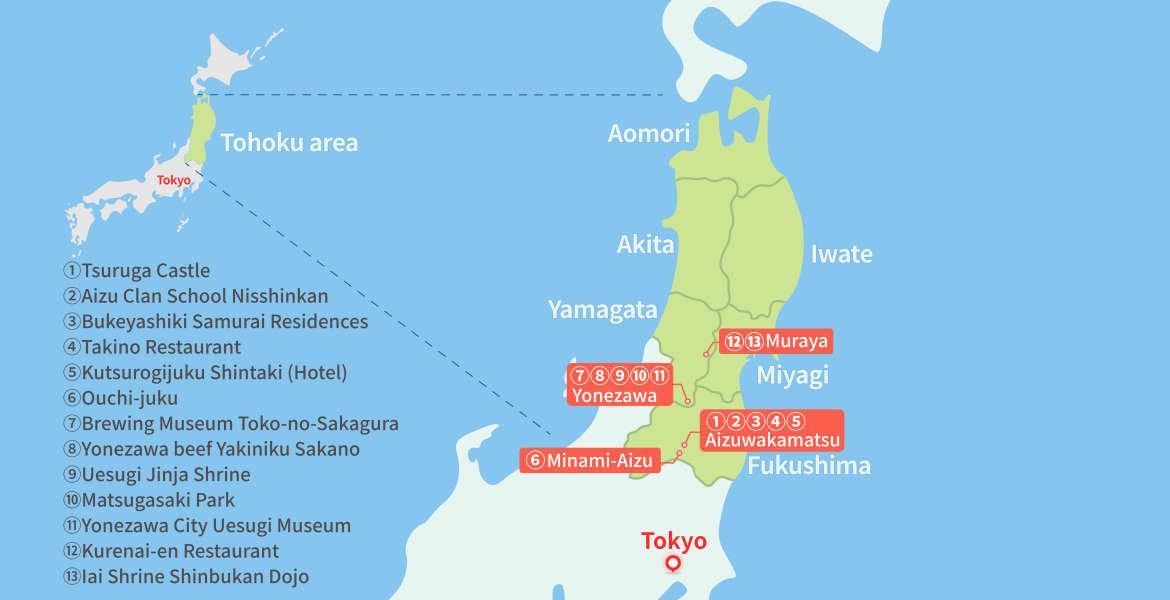
About John Daub

John Daub
John Daub is the creator and producer of the YouTube series “ONLY in JAPAN”, recipient of the 1M subscriber award at the YouTube Japan FanFest in 2019. His content has been viewed over 200 million times. The series highlights Japan’s destinations through stories of history, technology, food and people in all 47 prefectures. He is also a regular reporter for NHK World (Tokyo Eye, Destination Kansai, Journeys in Japan) and inbound news contributor for TBS Hiruobi.
You Tube-ONLY in JAPAN*GO | You Tube-ONLY in JAPAN*John Daub | Facebook | Instagram
































































